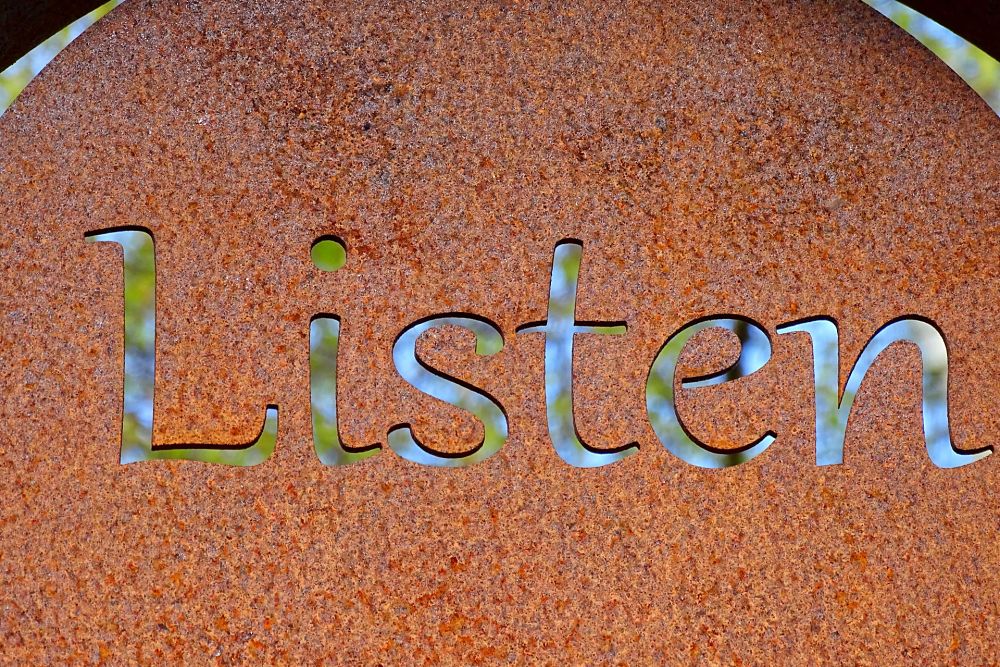Active Listening: Cross-Cultural Business Communication Skills
'Active listening' is a communication skill crucial to doing cross-cultural business.
As a skill, it requires the listener to become attuned with the speaker in order to confirm what they have heard and moreover, to confirm the understanding of both parties.
However, active engagement may differ across cultures.
In cross-cultural training, on videos and in guides, such as our free Cultural Awareness Handbook, the focus on communication skills is usually from the point of view of the 'sender', i.e. the person doing all the talking.
They usually include tips on how we can communicate clearly, exercises on how to build up cultural knowledge, strategies on how to act appropriately and adapt one’s communications style.
Here we want to explore communication skills but from the receiver’s point of view – by focusing on listening.
Are You a Good Active Listener?
To start with, I would like you, the reader, to briefly list 3 ways in which you demonstrate active listening.
Stop reading this and think about it. "How do I show good listening skills?"
Once you have your list, keep it handy as you will need it in a minute!
In interpersonal communication the emphasis is usually placed on the speaker or sender relaying the message. However, successful communication is in fact a two way process whereby the receiver plays an equally important role; because of the emphasis on the sender and the message, listening is often a technique in communication that remains underappreciated.

Photo by Belinda Fewings on Unsplash
Why are Listening Skills Important?
Rogers and Farson (1987) answer this rather eloquently by stating that ‘listening builds deep, positive relationships and tends to alter constructively the attitudes of the listener (...) Listening is a growth experience’.
As the receiver’s feedback tells the sender what/how the message has been understood, this allows the sender to make the required adjustments to make him/herself clearly understood hence making (or breaking) the relationship and communication cycle/flow.
Effective listening (paired with an effective method of sending the message) essentially leads to more worthwhile contributions and more open communication.
Becoming more actively involved and more mindful in the listening process can help us become better communicators.
However, when it comes to communicating across cultures, Lewis (2006) argues that there are differences in listening habits which can lead to miscommunication if one is not fully aware of how to bridge potential gaps.
If listening habits vary across cultures, then this is likely to be the case for active listening techniques too.
Active listening can be considered one of the more challenging skills in the field of communication. Despite how simple this concept may appear to be at first, when one looks closer it becomes apparent that there is no universal definition to describe this method, and becoming proficient means hard work in practical terms.

Photo by Amaryllis Liampoti on Unsplash
What is Active Listening?
Active listening is about listening with sincerity/ sensitivity and creating a climate of where equality, freedom, permissiveness, understanding, acceptance and warmth (Rogers & Farson 1987). There are various techniques to help create such a positive atmosphere.
The importance of cross-cultural sensitivity becomes important when looking to create such an atmosphere of trust in order to relay the desired response to the sender and to avoid miscommunication. In cross-cultural interactions there are certain discrepancies of how to create such an atmosphere of trust and what is considered as appropriate behaviour in active listening, depending on the culture(s) one is dealing with.
Essentially, there tends to be a certain etiquette associated with trust building and listening in different parts of the world.
Going back to the exercise you did at the start – did you write any of these points down?
• Making eye contact
• Nodding your head and using facial expressions
• Leaning in towards the speaker
• Summarising the speaker’s main points
• Paraphrasing what the speaker has said
• Using open ended questions
Although the above ways of demonstrating active listening would work well in a large part of North American continent and some European cultures, what if one is met with a Japanese audience?
Photo by Jase Bloor on Unsplash
The abovementioned tips may prove to be potentially problematic if faced with a Japanese audience as for example, holding one’s gaze is considered rude or even aggressive in Japanese culture.
In addition, nodding in Japanese culture simply means that one is listening rather than agreeing with what is being said. Leaning into the speaker might be considered encroaching on one’s personal space as the Japanese are generally not touchy-feely.
Finally, the Japanese value silence and pauses in between words, they also believe little in words and more in the actions which are played our hence excessive talking or nervous breaks of the silence would be considered out of place.
Let’s take another example - in Lebanon, people are said to be both active listeners and active talkers.
In practice, this means that intense eye contact, hand gestures and frequent interruptions while standing rather close to the speaker are considered acceptable.
In fact, remaining silent can be interpreted as an unsure sort of agreement, so the more involved one is while listening through gestures, interruptions and eye contact, the better as he/she is then seen as engaged and actively listening.
The above examples are rather simplistic as we human beings are actually much more complex and influenced by various other elements that transcend national culture and make us all unique.
However, national culture does have some overarching and unifying elements (such as the impact of a country’s historical past) which help explain why a large number of people behave and communicate the way they do.
The trick is to be sincerely interested in the target audience, and reading feedback will eventually clarify as to how one should demonstrate the art of active listening in that particular situation.
So, the next time you are dealing with a Japanese counterpart educated in the USA, you may find that the appropriate levels of engagement might lie somewhere in the middle.
By taking a moment to be mindful and demonstrating culturally acceptable ways of showing empathy, respect, acceptance and attention to the speaker, one becomes a cross-cultural active listener, and essentially a culturally agile individual.
There is not shortcut to get there – practice makes perfect!
Free Cultural Awareness Resources
Want to learn more about culture? We have various resources to help you boost your cultural awareness.
- Free CULTURE GUIDES - these offer insights into values, etiquette, customs and doing business in various countries.
- Free MANAGEMENT GUIDES - these look specifically at management in countries around the globe.
- Free eLEARNING COURSE ON CULTURAL AWARENESS - check out the free version of our excellent course about culture at work.
Photo by Franco Antonio Giovanella on Unsplash
Related Posts
By accepting you will be accessing a service provided by a third-party external to https://www.commisceo-global.com./

 +44 0330 027 0207 or +1 (818) 532-6908
+44 0330 027 0207 or +1 (818) 532-6908

